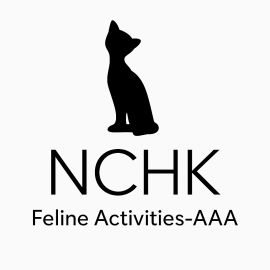Finding the Right Fit: Integrating Behavioral Assessment and Environmental Matching in Feline Activities
2025-09-25
Finding the Right Fit: Integrating Behavioral Assessment and Environmental Matching in Feline Activities
Abstract
Therapy animal programs depend not only on the skills of handlers but also on the capacity of animals to adapt to diverse human and environmental contexts. This article, inspired by the Society for Companion Animal Studies (SCAS) webinar delivered by Professor James Serpell (September 2025) and by the workshop “Finding the Right Fit: Matching the Therapy Animal to the Environment” led by Dr. Lindsey Wallace (Association of Animal-Assisted Intervention Professionals), highlights the importance of systematic behavioral profiling and environmental assessment in Feline Activities. Drawing from canine models such as C-BARQ and their feline adaptation, Fe-BARQ, we propose a structured approach to matching cats with environments in which their welfare, motivation, and therapeutic potential are optimized.
Introduction
Research and practice in animal-assisted interventions consistently emphasize that no single method or setting is universally effective. Both Professor James Serpell’s presentation on the predictive value of C-BARQ/Fe-BARQ and Dr. Lindsey Wallace’s clinical experience with therapy dogs converge on a central principle: success depends on the fit between the animal, the client, and the environment.
For cats in therapeutic programs (Feline Activities), this principle is particularly important, given their behavioral specificity, sensitivity to environmental stimuli, and wide inter-individual variation. The following sections explore the parameters to be monitored in cats, environments, and clients to ensure optimal matching.
Behavioral Profiling of Cats
Fe-BARQ and related citizen science-based instruments provide valuable frameworks for assessing feline behavioral tendencies. In practice, behavioral profiling should consider:
-
Confidence and trained behaviors: whether trained tasks reinforce the cat’s confidence or undermine it.
-
Sociability and contact: ease of initiating contact with clients, tolerance of guidance or cues.
-
Play and problem-solving: enjoyment of toys, puzzles, or structured tasks.
-
Tactile preferences: preferred types of stroking and handling, avoidance signals.
-
Food motivation: type of treats most effective for reinforcement.
-
Sensory sensitivities: tolerance of noise and unusual sounds; auditory range differences from humans.
-
Environmental preferences: preference for individual vs. group interactions, quiet rooms vs. larger spaces.
-
Sustained attention: duration of engagement before loss of interest.
-
Physical factors: age, joint health, sensitivity to temperature.
-
Novelty response: reaction to new objects, aids, or therapeutic tools.
-
Interaction load: number of client interactions manageable per session.
Environmental Assessment
The setting of Feline Activities must be adapted to the cat’s profile:
-
Safety and feeding: controlled treat distribution, minimizing competition with other animals.
-
Noise and stimuli: appropriate thresholds for the cat’s tolerance.
-
Activity level: balance of stimulation without overwhelming the animal.
-
Rest opportunities: availability of quiet spaces for breaks.
-
Spatial orientation: clarity of movement pathways, predictability of environmental signals.
Client Considerations
Equally critical is the assessment of client characteristics:
-
Number of participants: individual vs. group settings.
-
Energy level and age: children, adolescents, seniors, or highly active groups.
-
Assistive devices: exposure to wheelchairs, walkers, IV poles, respirators.
-
Interaction style: preference for touch, observation, or play.
-
Use of feline-specific behaviors: incorporating curiosity, tricks, or play as therapeutic mediators.



